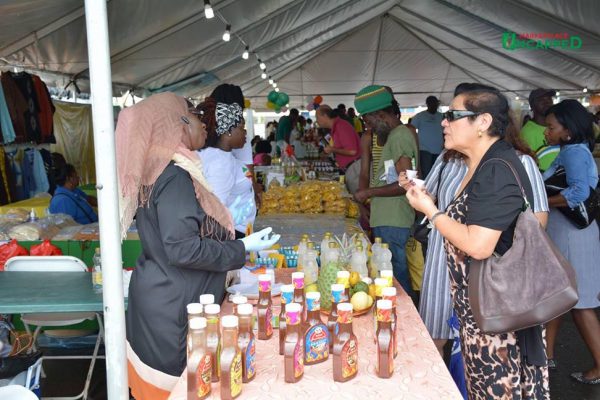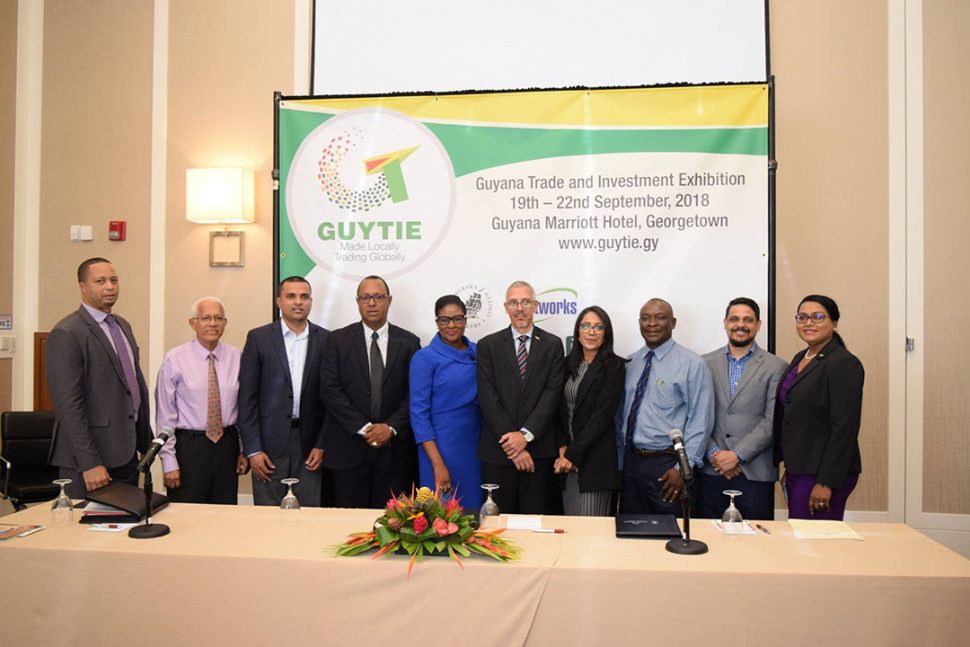During 2018 the Stabroek Business paid a great deal of attention to two issues that are likely to have an important bearing on employment generation and export earnings in the current year. The first of these is the undertaking that came from the Small Business Bureau in December that with effect from the commencement of 2019 the provision enshrined in the country’s Small Business Act for small businesses to be able to secure up to 20 per cent of state contracts valued at up to $30 million each would be activated. That provision is subject to criteria that have a bearing, mostly, on the demonstrable capability of the contractor to complete the contract to the desired specifications.
The second issue has to do with what, for much of last year, had been a high profile joint public/private sector effort to raise the profile of the country’s manufacturing sector, notably the agro processing sector, primarily through product promotion initiatives including two separate editions of the UNCAPPED event held at the Sophia Auditorium and the Providence Stadium, respectively, and the Guyana Trade and Investment Exhibition (GUYTIE) event staged at the Marriott Hotel in September.

As an aside the point should be made that – arguably more than any other sector – the manufacturing sector and more particularly the agro-processing sub sector – made significant strides particularly in terms of the range and quality of the products that were placed on the local market as well as in the area of product presentation, having significantly raised standards in the areas of packaging and labeling.
All that glittered in the agro processing manufacturing sector during last year, however, has not been gold. Perhaps the most notable setbacks have been the failure, up until now, of locally produced coconut water and honey to secure a firm foothold on the regional market, the constraints apparently associated with quality control queries in the instance of coconut water and what would appear to be intra-regional protectionist measures in the instance of honey. Both issues, as far as we are told, are currently the subject of sectoral attention though there has been little said about outcomes up to this time. Meanwhile, efforts to expand extra-regional markets for locally manufactured products continue to experience a range of challenges, not least those associated with heightened product standards requirements that have materialized in importing countries including the United States in relatively recent years.
For all of its steady improvement in product range, quality and presentation, therefore, the extent to which Guyana’s manufacturing sector – and more specifically its agro processing sector – has been able to meaningfully impact regional and international markets has been limited. To be sure local agro produce is popular in what remains modest markets in the region and further afield in the diaspora. The constraints associated with expanding those markets are commonly linked to production (volumes) to meet the demands of continually expanding external markets as well as marketing-related deficiencies. It has now generally been accepted that the long-standing GUYEXPO event has failed to ‘do the trick’ in terms of realizing market expansion even in the Caribbean. At a second level, the state-supported attendance at international marketing events by assorted vendors mostly in the agro-processing and handicraft areas have also had limited market expansion effect.
While the growth of the agro processing sector in both the range and quality of the products now available was manifestly evinced at the two UNCAPPED events, these events, by their very nature, were unable to provide any real barometer of the external (regional and international) demand for Guyana’s manufactured products. So that while they will continue to afford, mostly, opportunity for local vendors to secure a bigger domestic market share, their ability to increase exports remains limited. That responsibility was placed on the shoulders of the GUYTIE, a forum designed to facilitate encounters between high-profile entities and local manufacturing companies across the sectors. It should be noted that GUYTIE was a joint public/private sector event, promoted with much aplomb and intended, according to the organizers, to seriously ‘test the waters’ insofar as external market prospects for locally produced goods were concerned. That, at least, was the primary thrust of the promotion of GUYTIE.
From the outset the portents appeared uncertain, the primary indication of this being that lack of either North American or European representation at the event. That left the South Korean state-run entity KOTRA as one of the few notable international representatives at the event. In the final analysis the public/private sectors that hosted the GUYTIE event have been unable, up until now to provide a public assessment of its outcomes which, mind you, were intended to serve as a barometer with which to measure the extent of external interest in Guyana’s manufacturing sector.
Among local agro processors, particularly, difficulties associated with making inroads into the regional (CARICOM) market, continue to be weighed against the unrelenting flow of food products and snack foods from Trinidad and Tobago, particularly into Guyana. Their complaints are twofold; first, that limited opportunities for market expansion serve as a disincentive to investing in business growth and, secondly, that an imbalance in trade between Guyana and some countries in the region have not been addressed sufficiently robustly by the authorities in Guyana.
With Guyana’s agricultural sector having done more than its fair share to help sustain the country’s economy over the years, there is more that it is now contributing in terms of diversification into agro processing by increasing production of fruit and vegetables. If it is to be worthwhile, however, that effort will have to be complemented by evidence of the ability of the agro processing sector to absorb that production increase. Indicators provided by local trends point to an increasing demand for preserves and condiments made from a range of fruit including mango, guava, tamarind, cherry, five finger, sourie – and several others already being cultivated and for which there is room for expanded cultivation. Increased production of tropical fruits will have to be attended by significant public and private sector investments in manufacturing equipment to enable more efficient production on a larger scale as well as a far more aggressive effort than obtains at this time to expand external markets.
If the portents are promising there is still a great deal more to be done to increase regional and international market share. Moreover, and despite significant advances in packaging and labeling standards there is still need for significant investment in those areas if local products are to measure up to the quality available on the international market. That apart, there remains the challenge of arriving at a point where the various small businesses that mostly dominate the agro processing sector begin to grow rapidly in order to better position themselves to embrace the challenges associated with accessing and sustaining international markets.
While both the Ministry of Business and the Guyana Manufacturing & Services Association (GMSA) have gone on record as having said that they were satisfied with their collaborative efforts during 2018 there is still no persuasive evidence that the collaborative work by the two sides have impacted meaningfully on market expansion. The GMSA has also expressed an interest in the importance of higher levels of state investment in machinery and equipment associated with improving the efficiency of the production process in the manufacturing sector. At least, however, by the end of 2018 the GMSA was expressing some measure of satisfaction with the budgetary proposals for the manufacturing sector in 2019 and providing positive indications of its preparedness to continue to sit down with government on manufacturing issues.
Two of the standout accomplishments of public/private sector joint effort in 2018 were the breakthrough of the High Level Round Table in the forestry sector and the successful staging of three events that boosted the profile of the manufacturing sector. As the failure, to up to this time on the part of the two sides to make public the outcomes of the September GUYTIE event illustrates, however, there is still a great deal still to be done.






